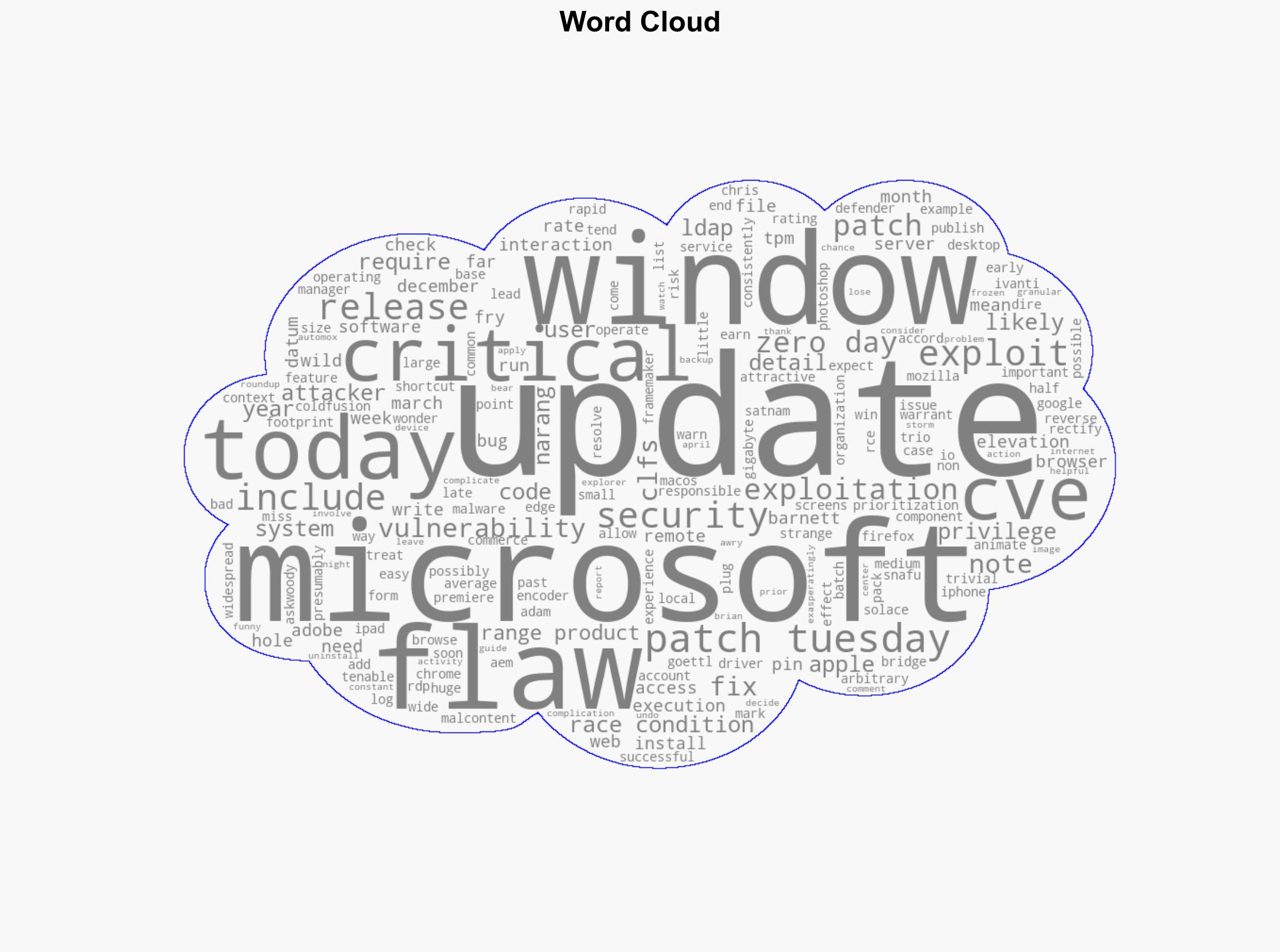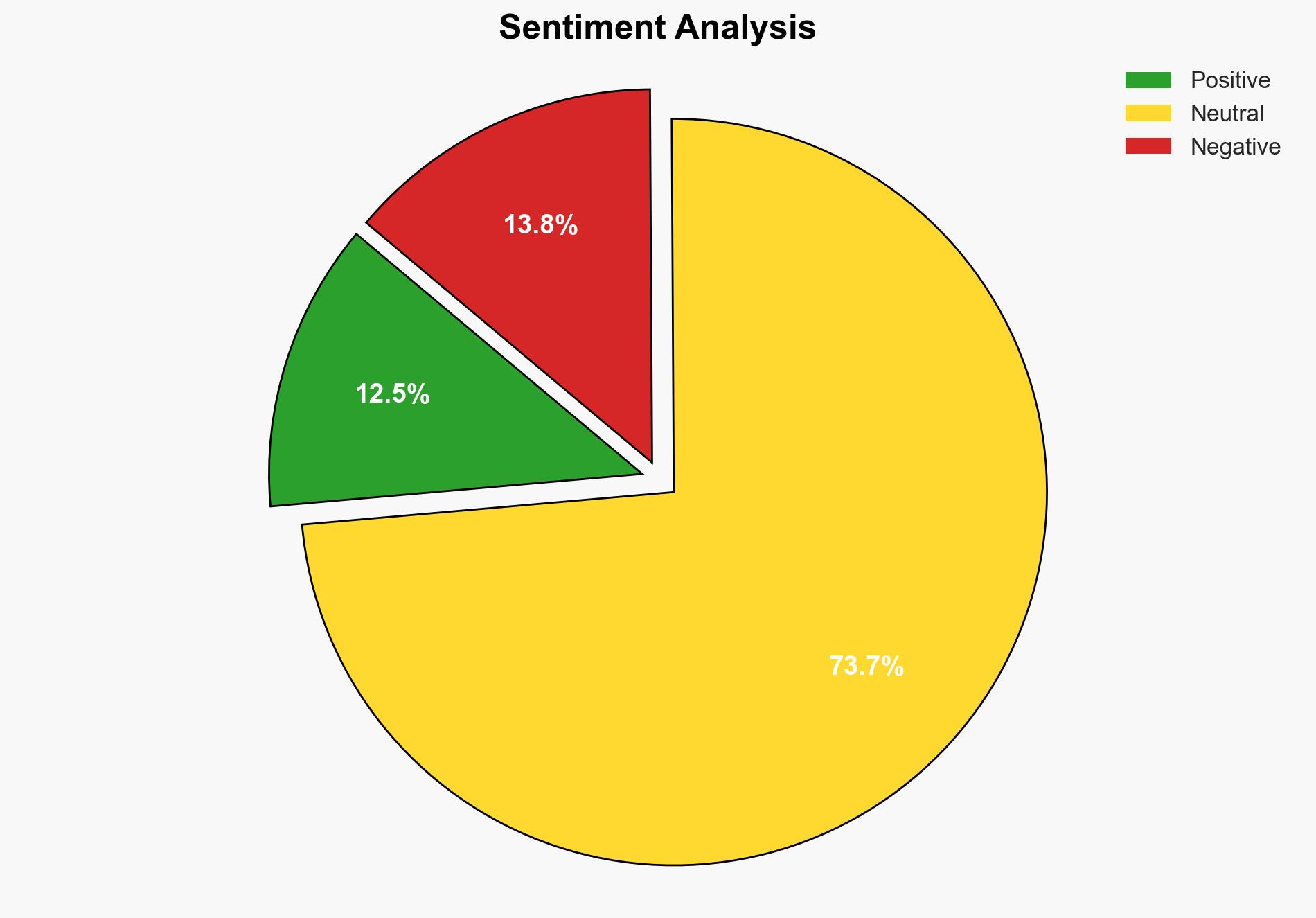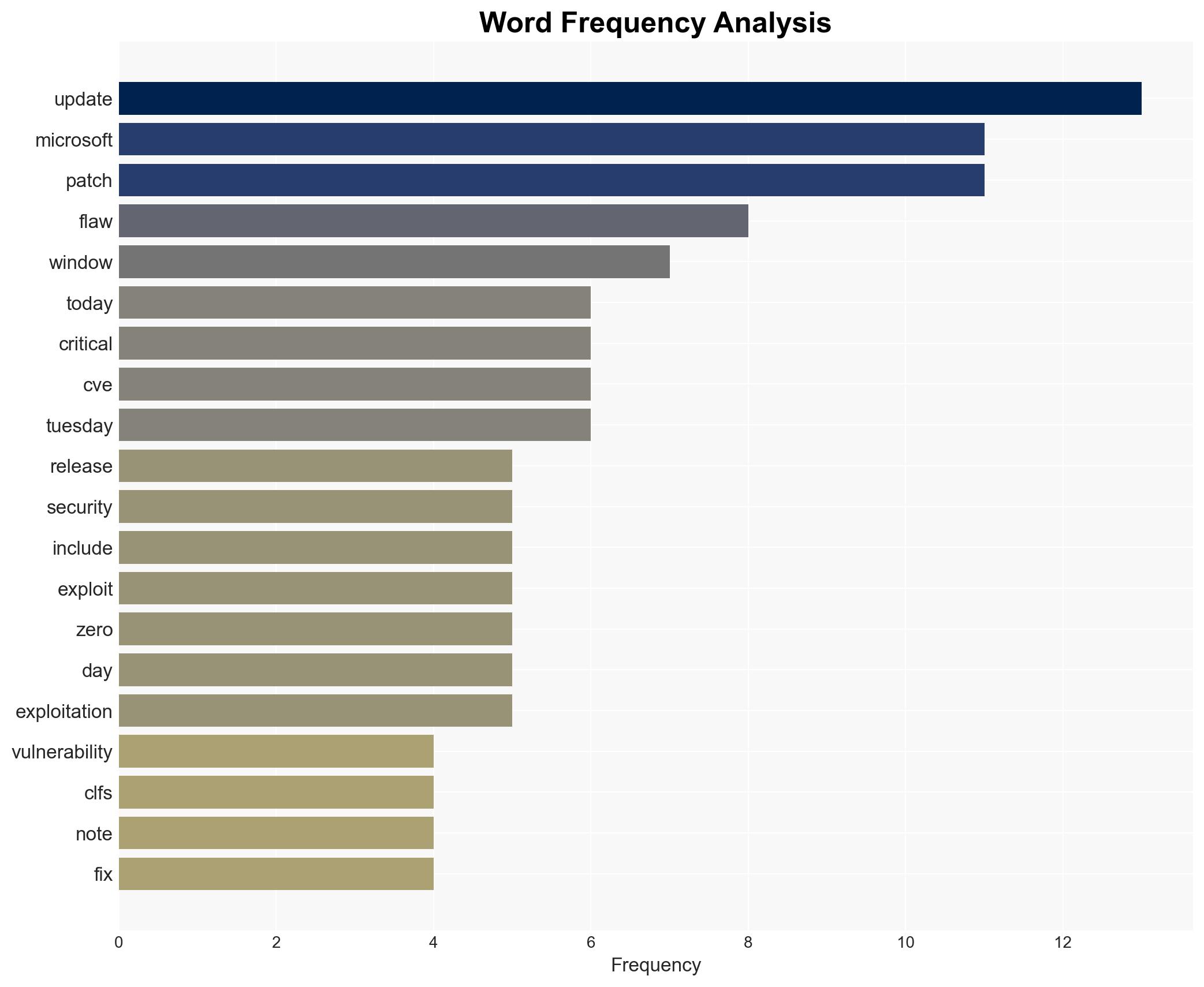Patch Tuesday April 2025 Edition – Krebs on Security
Published on: 2025-04-09
Intelligence Report: Patch Tuesday April 2025 Edition – Krebs on Security
1. BLUF (Bottom Line Up Front)
Microsoft has released critical security updates addressing vulnerabilities in its Windows operating system. Key vulnerabilities include a zero-day flaw in the Common Log File System (CLFS) driver and a critical remote code execution (RCE) vulnerability affecting LDAP servers. The updates are crucial for preventing potential exploitation by malicious actors, with immediate patching recommended to mitigate risks.
2. Detailed Analysis
The following structured analytic techniques have been applied for this analysis:
General Analysis
Microsoft’s April 2025 Patch Tuesday addresses several critical vulnerabilities, including a zero-day flaw in the CLFS driver, which has been exploited in the wild. The CLFS vulnerability allows attackers to execute arbitrary code with elevated privileges, posing a significant threat to systems. Additionally, a critical RCE vulnerability in LDAP servers could enable attackers to execute code remotely, potentially compromising organizational networks. The updates also include fixes for vulnerabilities in web browsers and Adobe products, highlighting the widespread nature of these security threats.
3. Implications and Strategic Risks
The vulnerabilities patched by Microsoft pose significant risks to national security, regional stability, and economic interests. The exploitation of these flaws could lead to unauthorized access to sensitive data, disruption of critical infrastructure, and financial losses. The widespread nature of these vulnerabilities underscores the importance of timely updates and robust cybersecurity measures to protect against potential threats.
4. Recommendations and Outlook
Recommendations:
- Organizations should prioritize the immediate application of the latest security updates to mitigate risks associated with the identified vulnerabilities.
- Implement comprehensive cybersecurity training and awareness programs to enhance organizational resilience against potential threats.
- Consider adopting advanced threat detection and response solutions to identify and neutralize threats in real-time.
Outlook:
Best-case scenario: Organizations promptly apply updates, significantly reducing the risk of exploitation and maintaining operational integrity.
Worst-case scenario: Delayed patching leads to widespread exploitation, resulting in data breaches, financial losses, and reputational damage.
Most likely outcome: While some organizations may experience initial disruptions, widespread patch adoption will mitigate long-term risks.
5. Key Individuals and Entities
The report mentions significant individuals and organizations involved in the analysis and commentary of these vulnerabilities. Notable mentions include Chris Goettl, Satnam Narang, and Adam Barnett, who have provided insights into the risks and implications of the vulnerabilities addressed in this Patch Tuesday update.





